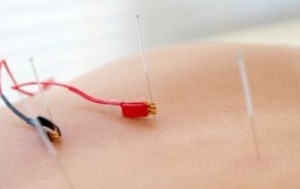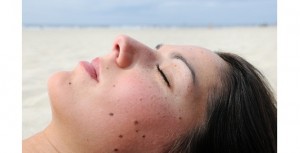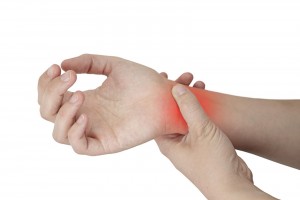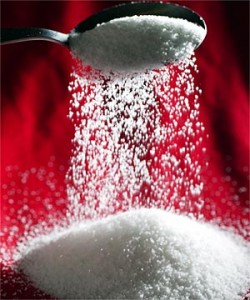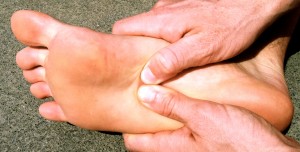 Article written by medbroadcast.com
Article written by medbroadcast.com
People with diabetes need to get to know their feet like – well, like the back of their hand. That’s because the high blood glucose levels common in diabetes can lead to two types of damage that spell trouble for the feet:
• blood vessel damage: Blood vessel damage can reduce blood flow to the feet, which can make the feet more vulnerable to ulcers and infection and make wounds slower to heal.
• nerve damage: The nerves that carry messages from the feet to the brain can be compromised by too much glucose in the blood.
This nerve damage is called neuropathy. When that circuit is interrupted by nerve damage, your feet might have a burning, numbing, or tingling sensation, or you might not be able to sense pain. That sounds like a good thing until you realize that feeling pain is what signals you that problems are afoot.
So say you wear new shoes, and they rub a blister onto your heel. With nerve damage, you might never know that the blister is there at all. And a simple blister that goes undetected can grow into a deep sore, known as an ulcer. An ulcer that becomes infected is a serious condition. Add reduced blood circulation to the mix, and the healing process slows down. To compound the problem, glucose-rich blood provides plenty of food for germs, making infection even harder to fight off.
Left undetected or untreated, ulcers and other foot injuries can affect mobility, changing a person’s weight distribution on their feet and boosting their risk of blisters and calluses. Infections can even advance to the point of gangrene. In fact, people with diabetes are at an elevated risk of foot or leg amputation compared to people without diabetes. Amputation is needed to prevent gangrene from spreading to other parts of the body.
Take steps to better foot care – Foot care actually starts far from your feet. Undoubtedly, the first and best strategy for healthy, happy feet is to manage your blood glucose levels. Keep your levels on target as often as possible, and you will minimize and even prevent the damage to your nerves and to your blood vessels. And smokers with diabetes, be advised: smoking decreases blood flow to your feet and can increase the risk of amputation.
Beyond blood sugar management and stopping smoking, there are several things you can do directly to manage your feet:
Go on a daily feet-scanning mission. Just like brushing your teeth or washing your face, checking your feet should be a part of your everyday routine.
• Check all sides of your feet – tops, bottoms, the toes, in between the toes, on the heels. You’re searching for any sign of potential trouble: ingrown toenails, cuts, cracking or dry skin, calluses, blisters, sores, corns, or warts.
• Changes in skin temperature could also signal developing sores.
• You can do your scan in the bath or shower, in bed, wherever it’s easiest for you to see your feet well.
• For those with mobility issues or who cannot reach their feet, you can ask a friend or family member to help out. Some people use mirrors to get a better view of the bottoms of their feet. Mirrored weigh scales are also available.
• If you notice any changes or troubling marks, consult your physician, primary health care provider, or foot specialist. Do not attempt to self-treat injuries or infections – even something as seemingly minor as an ingrown toenail.
Treat your feet with TLC
When you have diabetes, keeping your feet clean is crucial. But the simple act of washing your feet becomes a little more involved.
• Wash your feet daily in warm water using a mild soap. This means wash – not soak. Soaking can dry the skin. And warm water – not hot or cold. Nerve damage may make it hard to tell how hot or cold the water is, so test the temperature with your hand.
• Dry your feet well. Be gentle. Use a soft towel to pat dry and don’t forget between your toes. Avoid scrubbing or rubbing the skin too briskly.
• Moisturize your feet – your heels/soles – in the morning and at bedtime. Dry skin can crack and leave you susceptible to infection. Excess moisture also welcomes germs, so don’t use too much lotion, and never apply it between the toes. Shake on unmedicated powder to minimize sweating.
• After a shower, your nails are softer, so that’s the perfect time to tidy up your toenails. Trim nails straight across and not too short to prevent in-growns. If your nails have grown too thick (e.g. due to fungal infection), have someone help you.
Keep them covered
Something as straightforward as putting on your shoes and socks presents potential problems.
• Before slipping your feet into your shoes, look into each shoe and use your hand to feel around inside. You never know when a stray pebble, thumbtack, or paperclip could be awaiting your foot.
• Buying new shoes? Since feet swell through the day, it’s best to shop for shoes late in the afternoon.
• Choose shoes that fit properly, that don’t rub blisters, that provide cushioning, and that encourage even distribution of weight across the foot. Flip-flops, sandals, or peep-toe, pointy-toed, high-heeled, or worn-out shoes are not recommended.
• With any new pair of shoes, allow time to break them in. During the first few weeks, wear them for only 1 to 2 hours at a time.
• Socks rock. Always wear socks or stockings to keep feet from sweating too much or rubbing blisters. Switch your socks daily, and opt for looser-fitting ones that are not tight around the ankles.
• During colder weather, wear loosely-fitted wool socks to protect your feet from moisture and frostbite.
• Never go barefoot! Wear slippers or shoes at all times when you will be walking around, even indoors.
• Put your feet up when sitting. Don’t cross your legs for long periods of time.
Have your health care provider perform periodic foot check-ups:
Most physicians/health care providers know that foot care is a priority for people with diabetes, but you can advocate for your own two feet, too.
• Remove your shoes/socks when you’re waiting for your health care provider. This way, neither of you can forget about your feet.
• Don’t be foot-shy. If you have a question or concern, speak up.
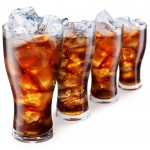 If you think that drinking a diet soda is a healthier alternative than a regular soda…. think again. Drinking just 2 glasses of diet soda a day can have negative effects to your health.
If you think that drinking a diet soda is a healthier alternative than a regular soda…. think again. Drinking just 2 glasses of diet soda a day can have negative effects to your health.
